Josef Sivic
Is This The Right Place? Geometric-Semantic Pose Verification for Indoor Visual Localization
Sep 02, 2019
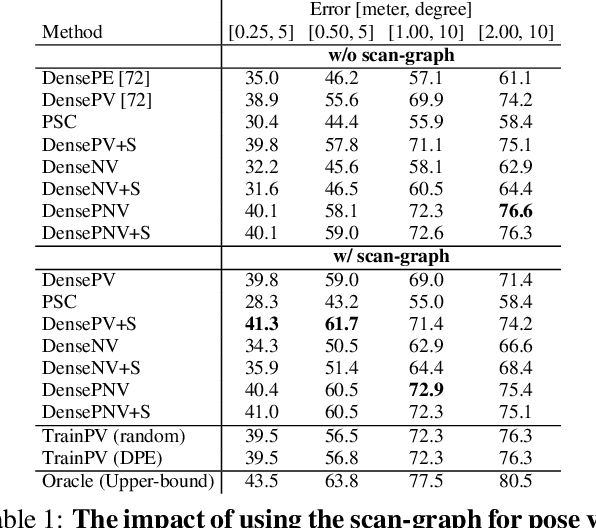
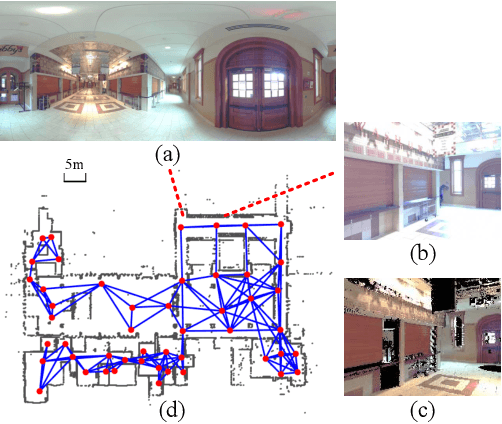
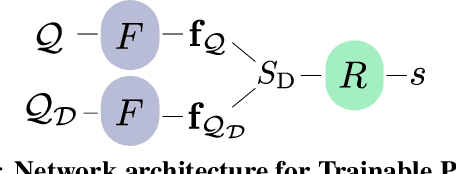
Abstract:Visual localization in large and complex indoor scenes, dominated by weakly textured rooms and repeating geometric patterns, is a challenging problem with high practical relevance for applications such as Augmented Reality and robotics. To handle the ambiguities arising in this scenario, a common strategy is, first, to generate multiple estimates for the camera pose from which a given query image was taken. The pose with the largest geometric consistency with the query image, e.g., in the form of an inlier count, is then selected in a second stage. While a significant amount of research has concentrated on the first stage, there is considerably less work on the second stage. In this paper, we thus focus on pose verification. We show that combining different modalities, namely appearance, geometry, and semantics, considerably boosts pose verification and consequently pose accuracy. We develop multiple hand-crafted as well as a trainable approach to join into the geometric-semantic verification and show significant improvements over state-of-the-art on a very challenging indoor dataset.
Combining learned skills and reinforcement learning for robotic manipulations
Aug 02, 2019
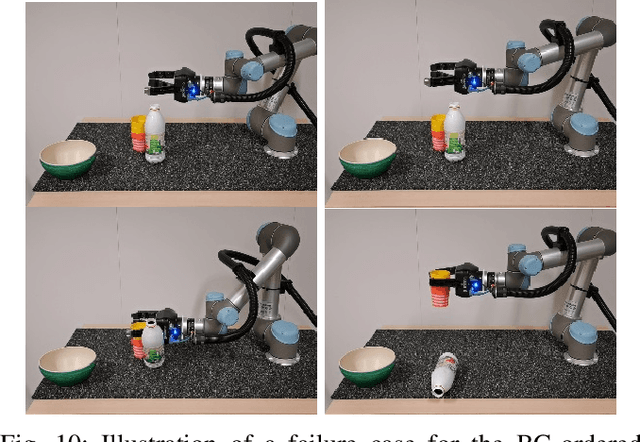
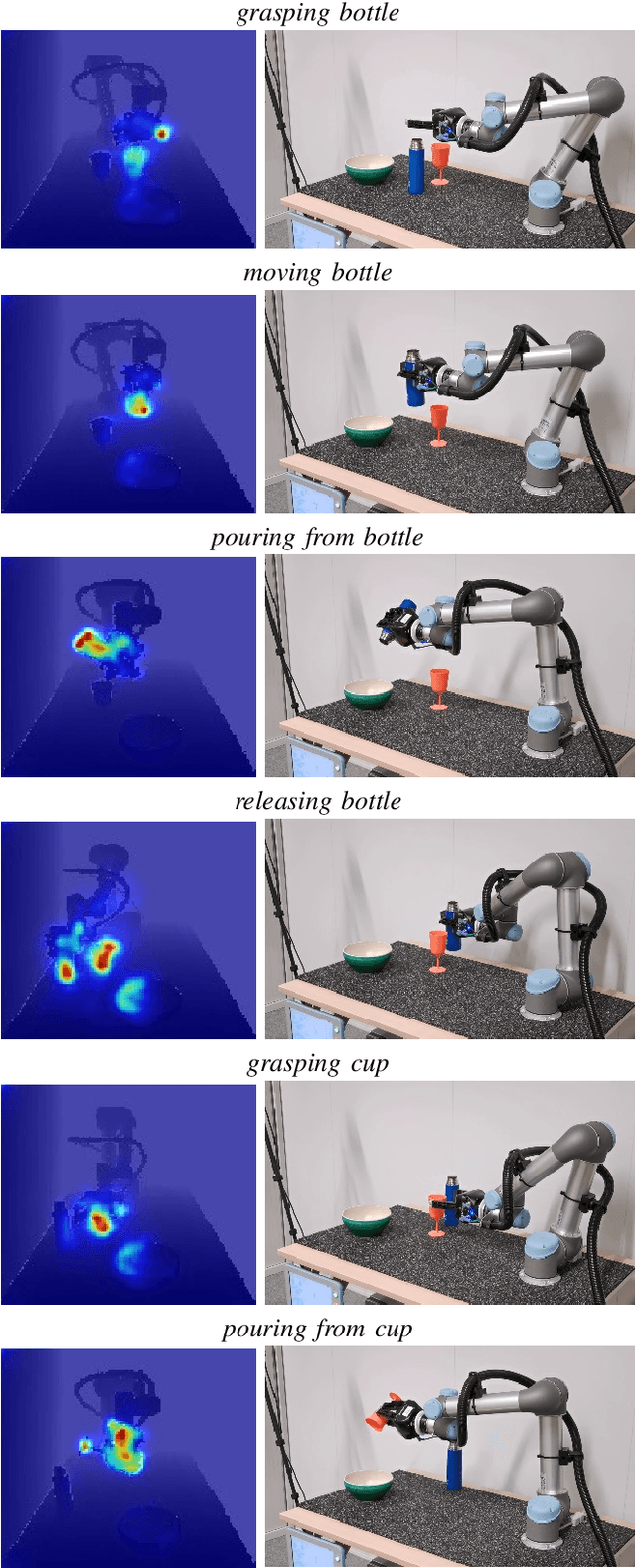
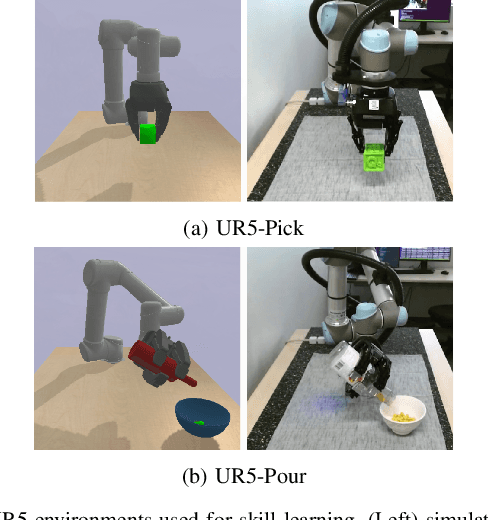
Abstract:Manipulation tasks such as preparing a meal or assembling furniture remain highly challenging for robotics and vision. The supervised approach of imitation learning can handle short tasks but suffers from compounding errors and the need of many demonstrations for longer and more complex tasks. Reinforcement learning (RL) can find solutions beyond demonstrations but requires tedious and task-specific reward engineering for multi-step problems. In this work we address the difficulties of both methods and explore their combination. To this end, we propose a RL policies operating on pre-trained skills, that can learn composite manipulations using no intermediate rewards and no demonstrations of full tasks. We also propose an efficient training of basic skills from few synthetic demonstrated trajectories by exploring recent CNN architectures and data augmentation. We show successful learning of policies for composite manipulation tasks such as making a simple breakfast. Notably, our method achieves high success rates on a real robot, while using synthetic training data only.
HowTo100M: Learning a Text-Video Embedding by Watching Hundred Million Narrated Video Clips
Jul 31, 2019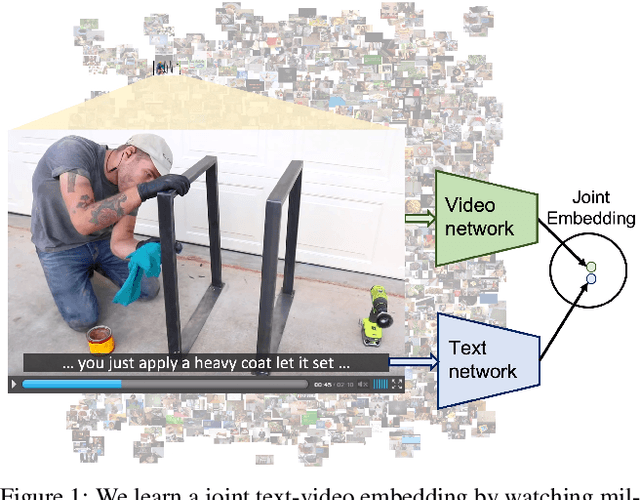
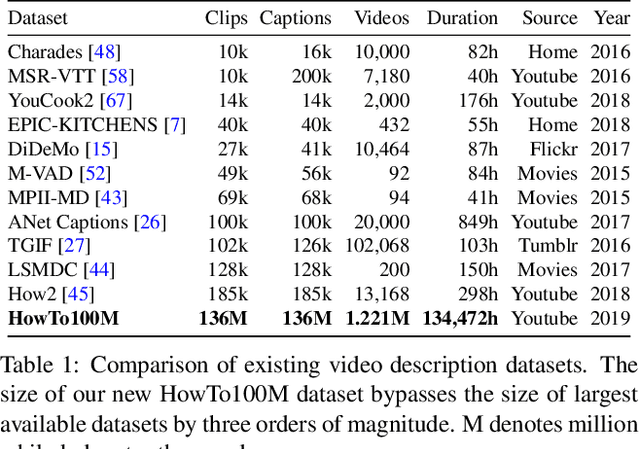
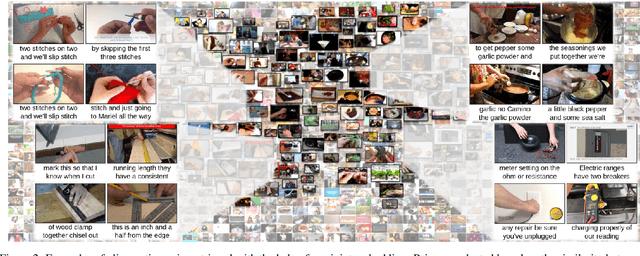
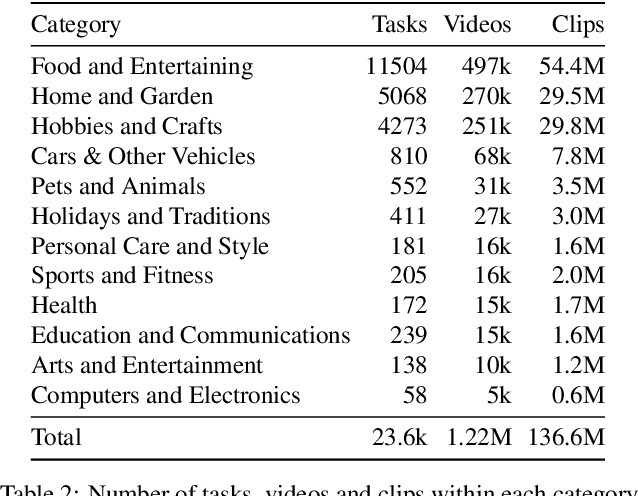
Abstract:Learning text-video embeddings usually requires a dataset of video clips with manually provided captions. However, such datasets are expensive and time consuming to create and therefore difficult to obtain on a large scale. In this work, we propose instead to learn such embeddings from video data with readily available natural language annotations in the form of automatically transcribed narrations. The contributions of this work are three-fold. First, we introduce HowTo100M: a large-scale dataset of 136 million video clips sourced from 1.22M narrated instructional web videos depicting humans performing and describing over 23k different visual tasks. Our data collection procedure is fast, scalable and does not require any additional manual annotation. Second, we demonstrate that a text-video embedding trained on this data leads to state-of-the-art results for text-to-video retrieval and action localization on instructional video datasets such as YouCook2 or CrossTask. Finally, we show that this embedding transfers well to other domains: fine-tuning on generic Youtube videos (MSR-VTT dataset) and movies (LSMDC dataset) outperforms models trained on these datasets alone. Our dataset, code and models will be publicly available at: www.di.ens.fr/willow/research/howto100m/.
Temporal Localization of Moments in Video Collections with Natural Language
Jul 30, 2019

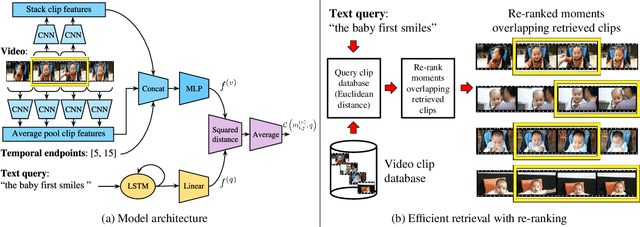
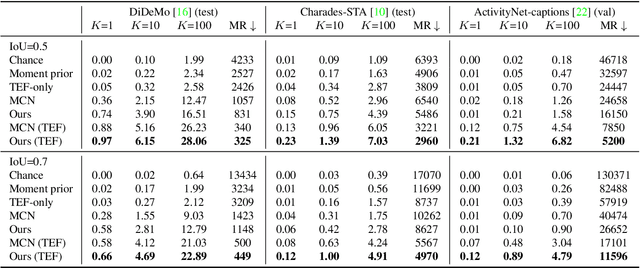
Abstract:In this paper, we introduce the task of retrieving relevant video moments from a large corpus of untrimmed, unsegmented videos given a natural language query. Our task poses unique challenges as a system must efficiently identify both the relevant videos and localize the relevant moments in the videos. This task is in contrast to prior work that localizes relevant moments in a single video or searches a large collection of already-segmented videos. For our task, we introduce Clip Alignment with Language (CAL), a model that aligns features for a natural language query to a sequence of short video clips that compose a candidate moment in a video. Our approach goes beyond prior work that aggregates video features over a candidate moment by allowing for finer clip alignment. Moreover, our approach is amenable to efficient indexing of the resulting clip-level representations, which makes it suitable for moment localization in large video collections. We evaluate our approach on three recently proposed datasets for temporal localization of moments in video with natural language extended to our video corpus moment retrieval setting: DiDeMo, Charades-STA, and ActivityNet-captions. We show that our CAL model outperforms the recently proposed Moment Context Network (MCN) on all criteria across all datasets on our proposed task, obtaining an 8%-85% and 11%-47% boost for average recall and median rank, respectively, and achieves 5x faster retrieval and 8x smaller index size with a 500K video corpus.
D2-Net: A Trainable CNN for Joint Detection and Description of Local Features
May 09, 2019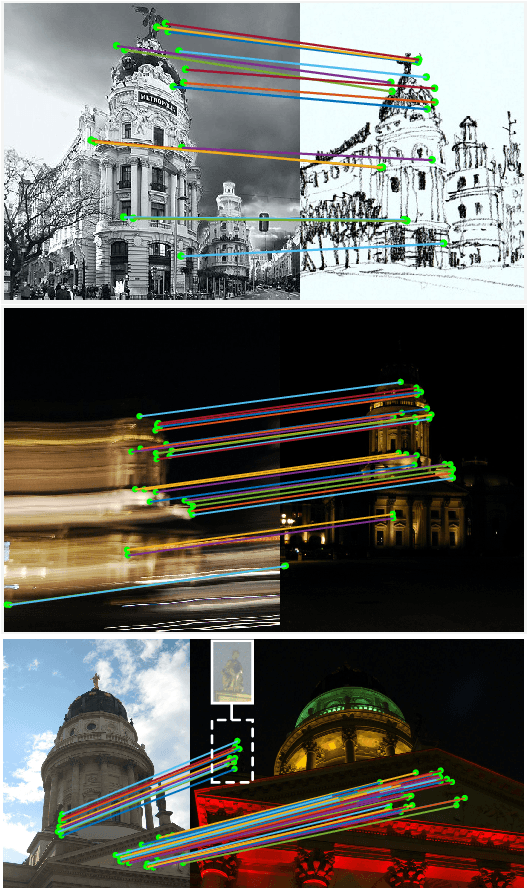
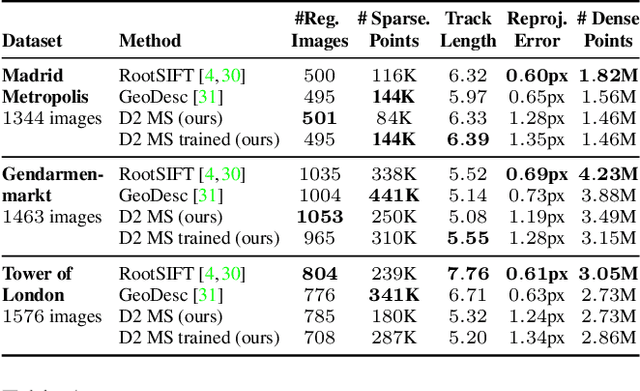
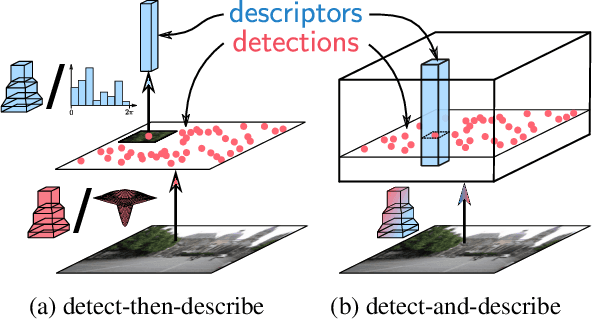
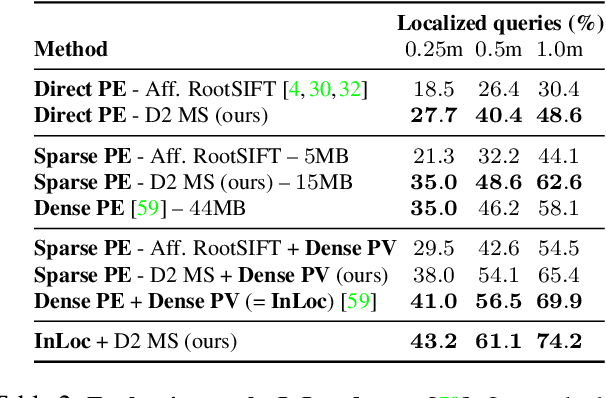
Abstract:In this work we address the problem of finding reliable pixel-level correspondences under difficult imaging conditions. We propose an approach where a single convolutional neural network plays a dual role: It is simultaneously a dense feature descriptor and a feature detector. By postponing the detection to a later stage, the obtained keypoints are more stable than their traditional counterparts based on early detection of low-level structures. We show that this model can be trained using pixel correspondences extracted from readily available large-scale SfM reconstructions, without any further annotations. The proposed method obtains state-of-the-art performance on both the difficult Aachen Day-Night localization dataset and the InLoc indoor localization benchmark, as well as competitive performance on other benchmarks for image matching and 3D reconstruction.
Monte-Carlo Tree Search for Efficient Visually Guided Rearrangement Planning
Apr 23, 2019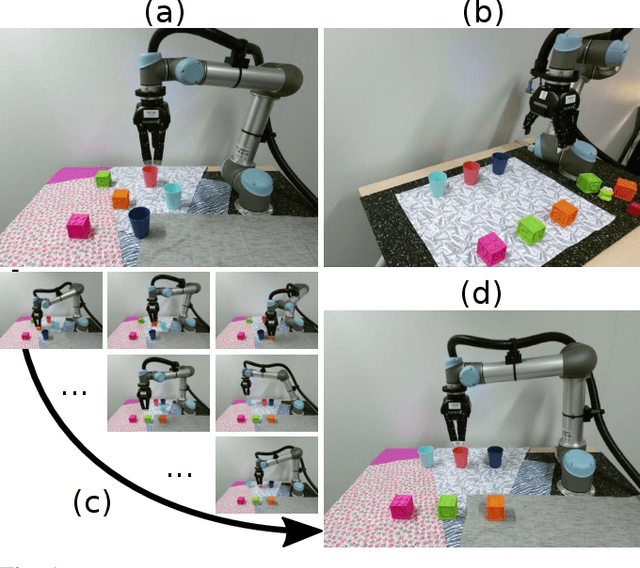
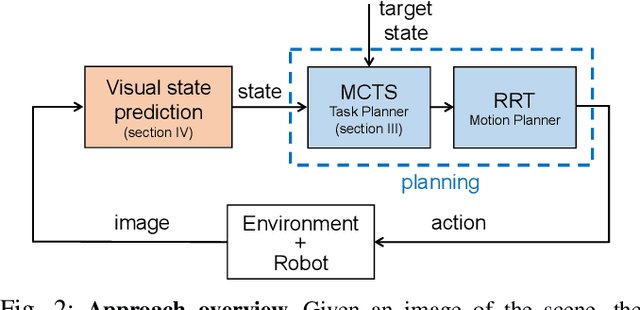
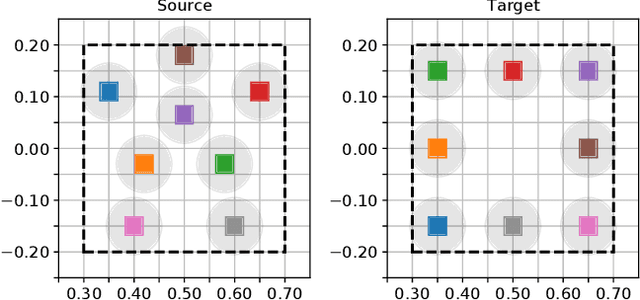
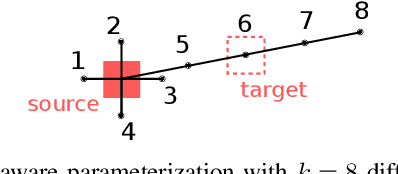
Abstract:In this paper, we address the problem of visually guided rearrangement planning with many movable objects, i.e., finding a sequence of actions to move a set of objects from an initial arrangement to a desired one, while relying directly on visual inputs coming from a camera. We introduce an efficient and scalable rearrangement planning method, addressing a fundamental limitation of most existing approaches that do not scale well with the number of objects. This increased efficiency allows us to use planning in a closed loop with visual workspace analysis to build a robust rearrangement framework that can recover from errors and external perturbations. The contributions of this work are threefold. First, we develop an AlphaGo-like strategy for rearrangement planning, improving the efficiency of Monte-Carlo Tree Search (MCTS) using a policy trained from rearrangement planning examples. We show empirically that the proposed approach scales well with the number of objects. Second, in order to demonstrate the efficiency of the planner on a real robot, we adopt a state-of-the-art calibration-free visual recognition system that outputs position of a single object and extend it to estimate the state of a workspace containing multiple objects. Third, we validate the complete pipeline with several experiments on a real UR-5 robotic arm solving rearrangement planning problems with multiple movable objects and only requiring few seconds of computation to compute the plan. We also show empirically that the robot can successfully recover from errors and perturbations in the workspace. Source code and pretrained models for our work are available at https://github.com/ylabbe/rearrangement-planning
Estimating 3D Motion and Forces of Person-Object Interactions from Monocular Video
Apr 04, 2019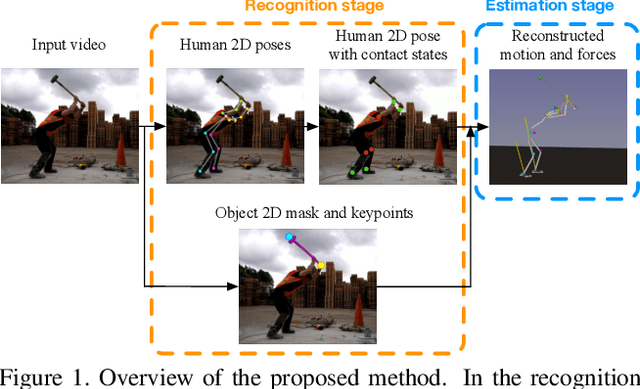


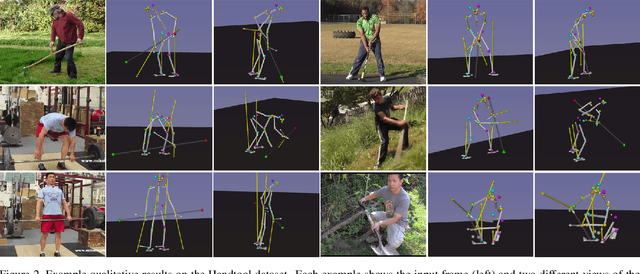
Abstract:In this paper, we introduce a method to automatically reconstruct the 3D motion of a person interacting with an object from a single RGB video. Our method estimates the 3D poses of the person and the object, contact positions, and forces and torques actuated by the human limbs. The main contributions of this work are three-fold. First, we introduce an approach to jointly estimate the motion and the actuation forces of the person on the manipulated object by modeling contacts and the dynamics of their interactions. This is cast as a large-scale trajectory optimization problem. Second, we develop a method to automatically recognize from the input video the position and timing of contacts between the person and the object or the ground, thereby significantly simplifying the complexity of the optimization. Third, we validate our approach on a recent MoCap dataset with ground truth contact forces and demonstrate its performance on a new dataset of Internet videos showing people manipulating a variety of tools in unconstrained environments.
Cross-task weakly supervised learning from instructional videos
Mar 19, 2019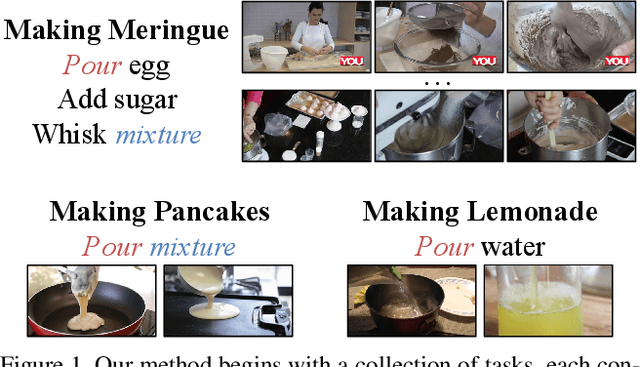
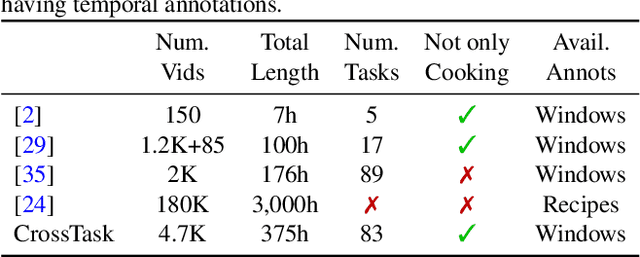


Abstract:In this paper we investigate learning visual models for the steps of ordinary tasks using weak supervision via instructional narrations and an ordered list of steps instead of strong supervision via temporal annotations. At the heart of our approach is the observation that weakly supervised learning may be easier if a model shares components while learning different steps: `pour egg' should be trained jointly with other tasks involving `pour' and `egg'. We formalize this in a component model for recognizing steps and a weakly supervised learning framework that can learn this model under temporal constraints from narration and the list of steps. Past data does not permit systematic studying of sharing and so we also gather a new dataset, CrossTask, aimed at assessing cross-task sharing. Our experiments demonstrate that sharing across tasks improves performance, especially when done at the component level and that our component model can parse previously unseen tasks by virtue of its compositionality.
Teaching robots to imitate a human with no on-teacher sensors. What are the key challenges?
Jan 24, 2019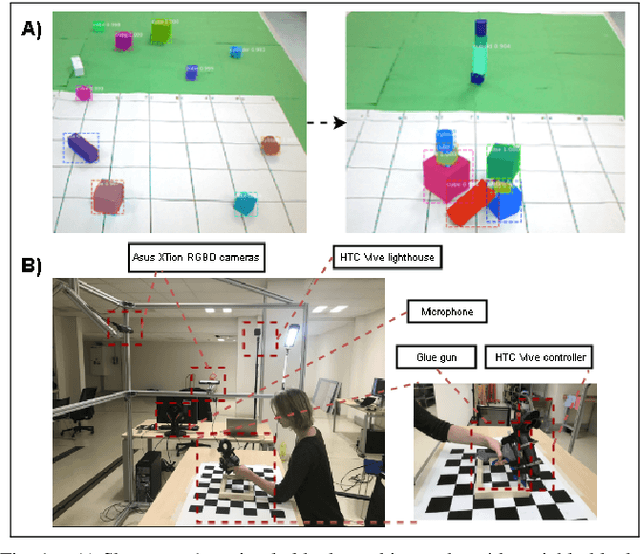

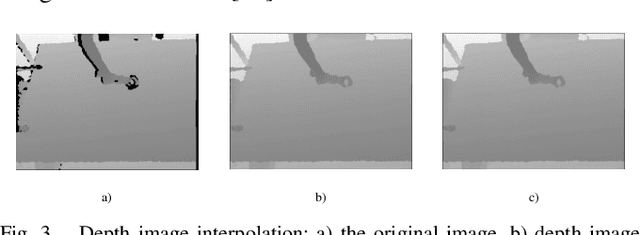
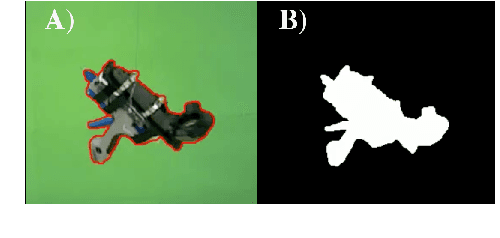
Abstract:In this paper, we consider the problem of learning object manipulation tasks from human demonstration using RGB or RGB-D cameras. We highlight the key challenges in capturing sufficiently good data with no tracking devices - starting from sensor selection and accurate 6DoF pose estimation to natural language processing. In particular, we focus on two showcases: gluing task with a glue gun and simple block-stacking with variable blocks. Furthermore, we discuss how a linguistic description of the task could help to improve the accuracy of task description. We also present the whole architecture of our transfer of the imitated task to the simulated and real robot environment.
Detecting rare visual relations using analogies
Dec 13, 2018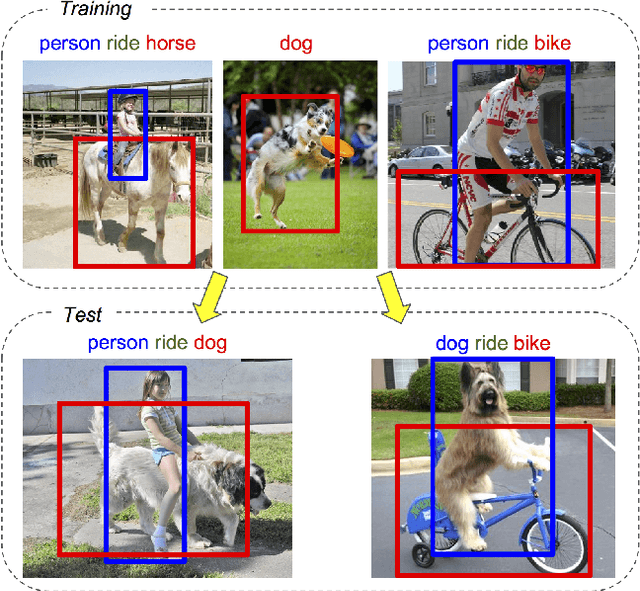
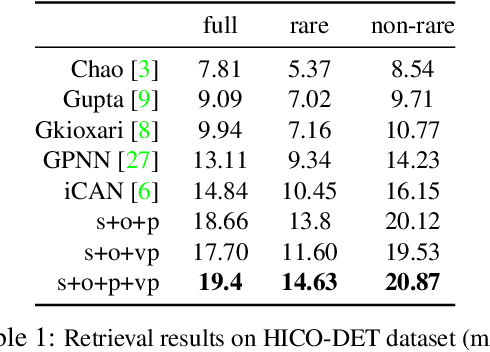
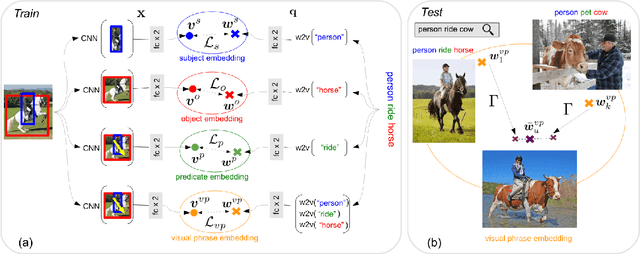
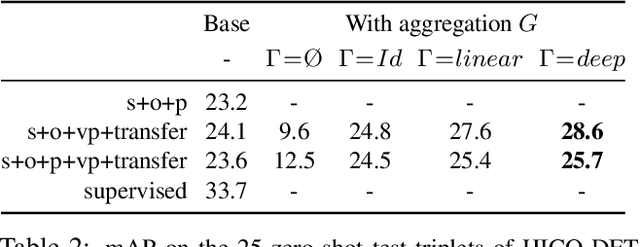
Abstract:We seek to detect visual relations in images of the form of triplets t = (subject, predicate, object), such as "person riding dog", where training examples of the individual entities are available but their combinations are rare or unseen at training. This is an important set-up due to the combinatorial nature of visual relations : collecting sufficient training data for all possible triplets would be very hard. The contributions of this work are three-fold. First, we learn a representation of visual relations that combines (i) individual embeddings for subject, object and predicate together with (ii) a visual phrase embedding that represents the relation triplet. Second, we learn how to transfer visual phrase embeddings from existing training triplets to unseen test triplets using analogies between relations that involve similar objects. Third, we demonstrate the benefits of our approach on two challenging datasets involving rare and unseen relations : on HICO-DET, our model achieves significant improvement over a strong baseline, and we confirm this improvement on retrieval of unseen triplets on the UnRel rare relation dataset.
 Add to Chrome
Add to Chrome Add to Firefox
Add to Firefox Add to Edge
Add to Edge